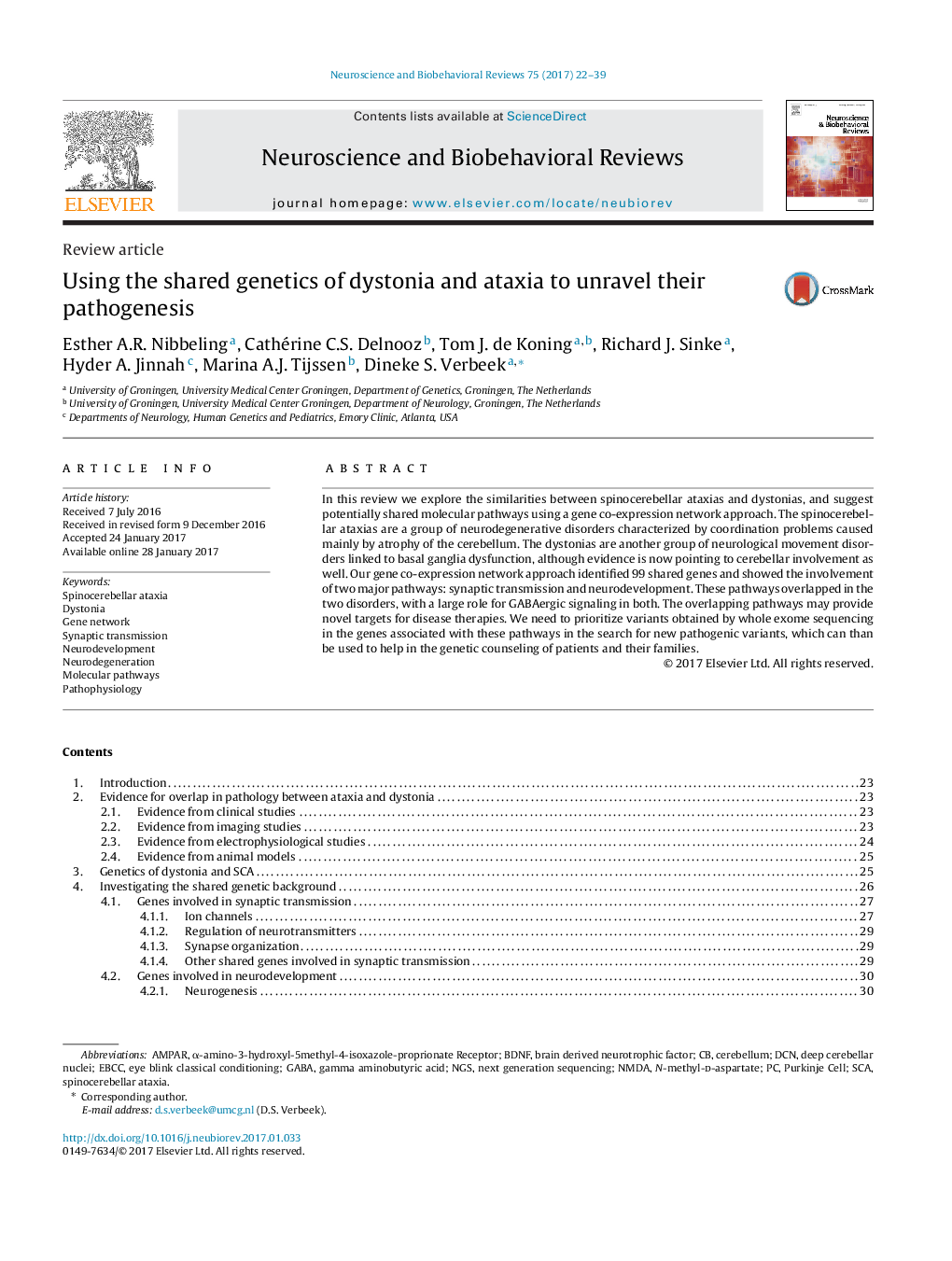| Article ID | Journal | Published Year | Pages | File Type |
|---|---|---|---|---|
| 5043497 | Neuroscience & Biobehavioral Reviews | 2017 | 18 Pages |
â¢Familial co-morbidity suggests that ataxia and dystonia share a genetic background.â¢Many ataxia and dystonia genes are involved in similar pathways.â¢Synaptic transmission and neurodevelopment are two key shared pathways.â¢Understanding the shared pathogenesis will provide new targets for drug development.â¢Shared genes are excellent candidate genes for unexplained cases of ataxia and dystonia.
In this review we explore the similarities between spinocerebellar ataxias and dystonias, and suggest potentially shared molecular pathways using a gene co-expression network approach. The spinocerebellar ataxias are a group of neurodegenerative disorders characterized by coordination problems caused mainly by atrophy of the cerebellum. The dystonias are another group of neurological movement disorders linked to basal ganglia dysfunction, although evidence is now pointing to cerebellar involvement as well. Our gene co-expression network approach identified 99 shared genes and showed the involvement of two major pathways: synaptic transmission and neurodevelopment. These pathways overlapped in the two disorders, with a large role for GABAergic signaling in both. The overlapping pathways may provide novel targets for disease therapies. We need to prioritize variants obtained by whole exome sequencing in the genes associated with these pathways in the search for new pathogenic variants, which can than be used to help in the genetic counseling of patients and their families.
